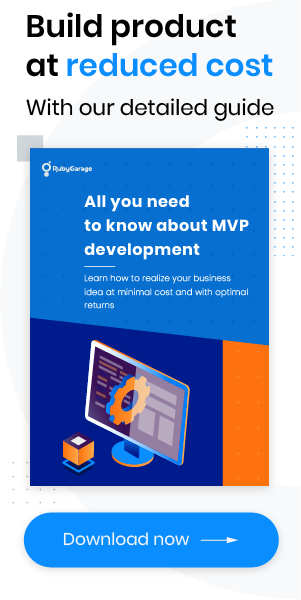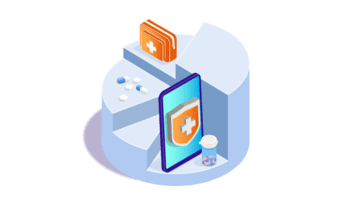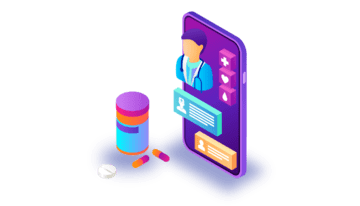-
Product Management
Software Testing
Technology Consulting
-
Multi-Vendor Marketplace
Online StoreCreate an online store with unique design and features at minimal cost using our MarketAge solutionCustom MarketplaceGet a unique, scalable, and cost-effective online marketplace with minimum time to marketTelemedicine SoftwareGet a cost-efficient, HIPAA-compliant telemedicine solution tailored to your facility's requirementsChat AppGet a customizable chat solution to connect users across multiple apps and platformsCustom Booking SystemImprove your business operations and expand to new markets with our appointment booking solutionVideo ConferencingAdjust our video conferencing solution for your business needsFor EnterpriseScale, automate, and improve business processes in your enterprise with our custom software solutionsFor StartupsTurn your startup ideas into viable, value-driven, and commercially successful software solutions -
-
- Case Studies
- Blog
Mental Health App Development: Essential Features, Time, and Cost
Around 11% of people (800 million) around the globe suffer from some kind of mental health disorder. Moreover, the COVID-19 pandemic has aggravated the situation and contributed to the rise of problems such as anxiety, depression, and post-traumatic stress. The demand for digital solutions for assessment, prevention, support, and treatment of mental health problems has drastically increased in recent years. Healthcare service providers have already developed over 10,000 mental health apps, and demand for these solutions will continue to grow.
Keep reading to learn why to invest in mental health app development, what steps to follow, what features to include in different types of apps, and what time and money you’ll need to launch your mental health solution.
What are mental health apps?
Mental health apps help people improve their well-being. Such apps are not usually used as a substitute for treatment provided by a mental health specialist. Rather, mental health apps offer people support between consultations or after completing therapy. They can provide therapeutic activities, self-help tools, encouragement, and more.
Why is mental health app development a promising startup idea?
If you’re a startup owner willing to invest time and money into developing an innovative and helpful healthcare app, consider the reasons why mental health app development can be a great idea that will make your business a success.
Growth in demand for mental health apps
Though more and more people understand the importance of maintaining their health, many still don’t want to go to a therapist for the following reasons:
- Cost of long-term therapy
- Lack of time for regular in-person visits to a mental health professional
- Difficulties finding a highly knowledgeable specialist
- A belief that only people with severe mental problems go to therapy
- Fear that a doctor will disclose private medical information and people will start mocking them
- Embarrassment shyness of talking to an unknown person about personal problems
Thankfully, mental health apps help fully or partially address most of these challenges. Additionally, they offer flexibility, immediate access to care even in remote regions, and the possibility of managing some mental health disorders without needing a medical specialist’s help. Finally, these apps work toward improving people’s mental health and well-being.
All these factors, along with the growing number of people struggling with depression and anxiety, foster the demand for mental health apps. According to a study by Acumen Research and Consulting, the global market for all mental health apps is forecasted to reach $3.7 billion by 2027. Now is a great time for mental health service providers to enter the market with innovative healthcare solutions that could become a lifesaver for both therapists and patients.
Ample opportunities for innovation despite strong competition
When you start analyzing the mental health solutions market, you may find it to be highly competitive. This observation is correct, but even the most widespread mental health apps do not perfectly meet users’ needs. According to a Health Informatics Journal survey, people often complain about the poor usability of apps, improper data security, absence of offline mode in apps used by people suffering from panic attacks, etc.
In fact, due to the weaknesses of numerous existing apps, there is an excellent opportunity to outperform competitors with more advanced mental health apps.
How to develop a mental health app: steps to follow
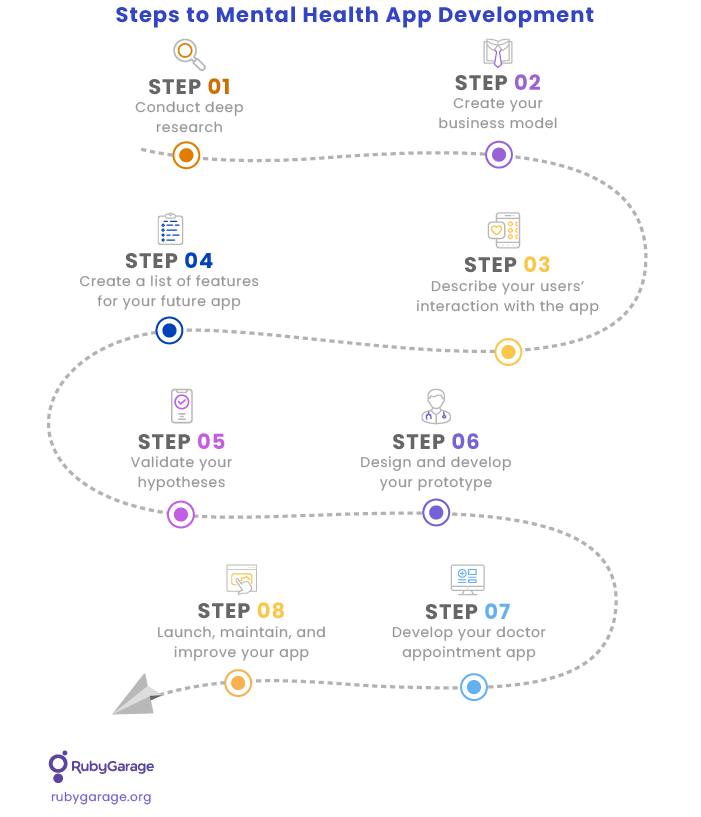
To make your mental health app development process smooth and efficient, we recommend you follow these crucial steps.
Step 1. Conduct market, competitor, and target audience research to understand if your startup idea is worth implementing, find the right market niche, and formulate your unique value proposition.
Step 2. Develop a business model for your mental health app. It will help you visualize your startup idea by specifying your value proposition, the resources needed for mental health app development, and the monetization model you’ll use to earn money from your app.
Step 3. Create a scheme of your users’ interactions with the mental health app to understand their experience within the app, detect possible inconsistencies in their journey, and improve the user experience.
Step 4. Decide what features you will add to your app. Note that the exact set of features will depend on the type of mental health app you’re going to build and your value proposition.
Step 5. Validate your hypotheses to find out if your assumptions are correct.
Step 6. Design and develop a prototype to check if the app is easy to navigate and users understand how to use it.
Step 7. Develop your MVP for iOS, Android, or both operating systems. If you want to save money, you may develop a React Native app that works on both operating systems.
Step 8. Launch your mental health app and work on its continuous improvement. You’ll need to ensure proper app maintenance, provide users with high-quality support, and improve your app to outperform competitors.
Types of mental health apps, their key features, and development cost
The mental health apps market is diverse. Having no clear understanding of the target audience or the app’s purpose are among the key risks that could cause your startup to fail. To avoid this, you need to start by reviewing the available types of mental health apps and deciding on what kind of app you’re going to build and what type of users you’re going to target.
To ease your analysis and decision-making process, we’ve described the most popular types of mental health apps and given examples of such apps while indicating their core features and development cost.
Online therapy apps to treat anxiety, stress, or depression
Target audience: People suffering from stress, depression, and anxiety who want to chat with a licensed therapist or counselor online.
Online therapy apps are targeted at patients suffering from stress, depression, anxiety, or other mental health conditions, and they enable users to get professional consultations from therapists via chat, phone, or video conferencing.
Though online therapy cannot fully substitute for in-person visits to doctors, research confirms its efficiency in treating many mental health problems. For example, according to study results published in the Journal of Psychological Disorders, online behavioral therapy demonstrated the same effectiveness as face-to-face treatment for generalized anxiety disorder, panic disorder, and depression.
More and more patients are starting to use online therapy apps every day because they offer:
- Convenience. There’s no need to go to the hospital to communicate with a therapist.
- Privacy. All patients’ health information disclosed during therapy sessions is protected by law.
- Affordability. Online counseling is cheaper than in-person consultations, especially if used on a subscription basis.
One of the most popular mental health apps: BetterHelp
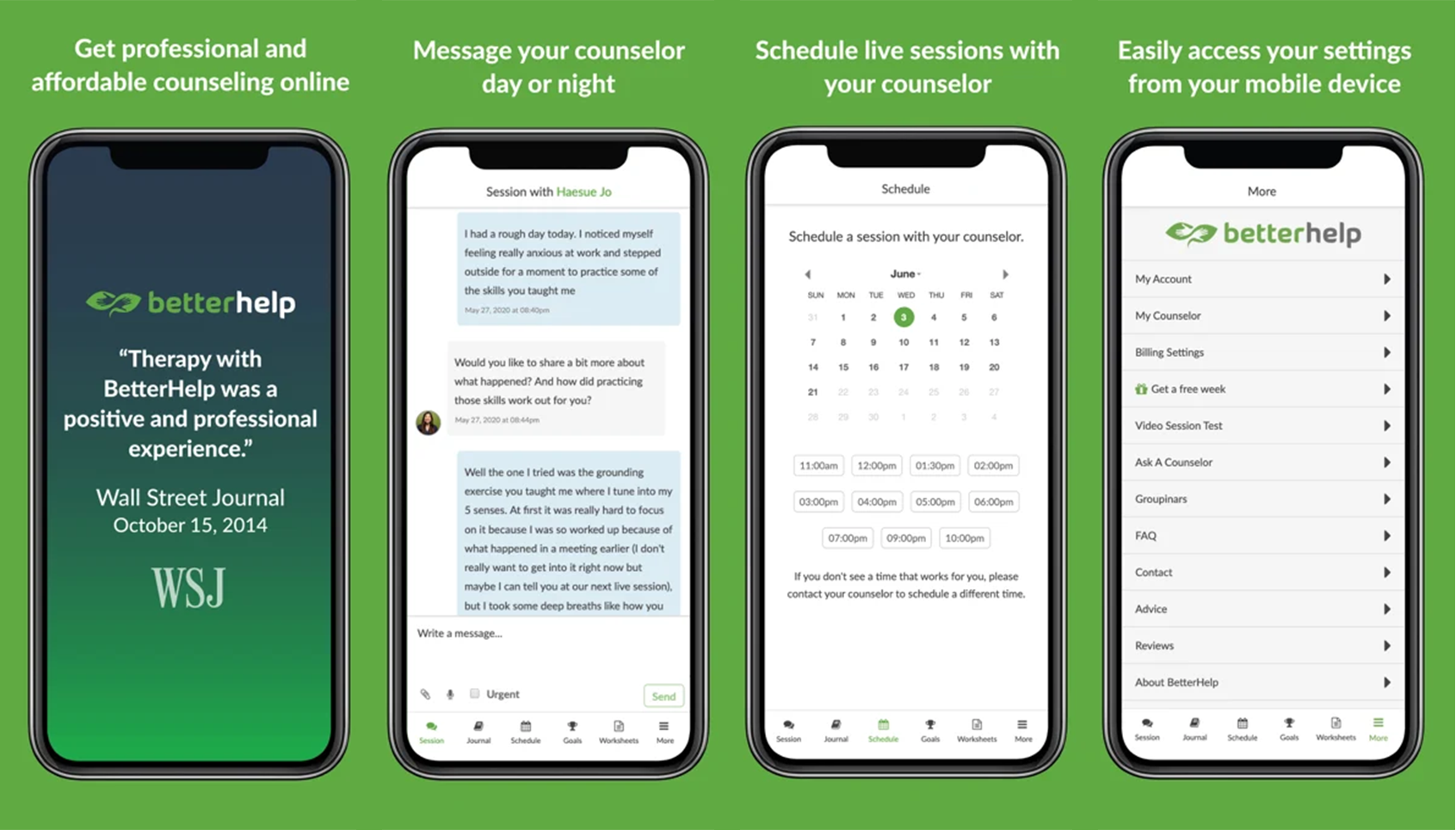
BetterHelp is a global leader in online therapy and professional mental health services. It aims to match people with licensed therapists that provide patient-specific therapy for alleviating mental health-related problems. Additionally, BetterHelp is considered the top app for diagnosing and treating different mental health disorders like anxiety and depression, and well as for coping with everyday life challenges.
After an easy sign-up, patients answer a few questions and get matched to licensed and board-certified therapists that fits their needs. After that, patients are free to choose between several options for getting mental health support:
- Exchange messages with the therapist anytime without prior scheduling
- Communicate with therapists via live chat
- Schedule live sessions via audio or video conference at a convenient time
Usually, therapists respond to patients’ messages several times a day, but if more interaction is needed, patients can easily schedule a video chat or call. Apart from virtual communication with a mental health professional, patients can participate in educational webinars by expert therapists.
If you decide to develop a mental health app like BetterHelp, make sure you know what features to include in your app. Below, you’ll find basic features for this type of mental health app.
FEATURE SET FOR A MENTAL HEALTH APP LIKE BETTERHELP
| Patient | Therapist | Admin |
|---|---|---|
|
|
|
Specialists at RubyGarage have given a rough estimate of the amount of time needed to develop a mental health app like BetterHelp (React Native app).
| Activity | Hours |
|---|---|
| Business analysis | 316 |
| UI/UX design | 572 |
| Backend API development | 678 |
| Mobile app development | 475 |
| Quality assurance | 275 |
| Total | 2,316 |
It will take six to seven months to complete mental health app development, and you’ll need to spend around $116,000 if you decide to partner with our company.
Self-improvement, meditation, and mindfulness apps
Target audience: People using an app for self-improvement and mood control.
These apps are designed to help users improve their mood, reduce stress, improve sleep, calm down during or after a stressful day, get more focused, and make many other positive life changes.
Self-improvement, meditation, and mindfulness apps serve as a helpful guide for beginners who don’t know how to practice meditation and for those who practice mindfulness on a regular basis using breathing methods, meditation, and other techniques to relax their bodies. Users can enjoy guided routines, easy yoga workouts, numerous breathing exercises, or prayers that enable them to control their mood and keep a sense of inner peace throughout the day.
One of the most popular mental health apps: Calm
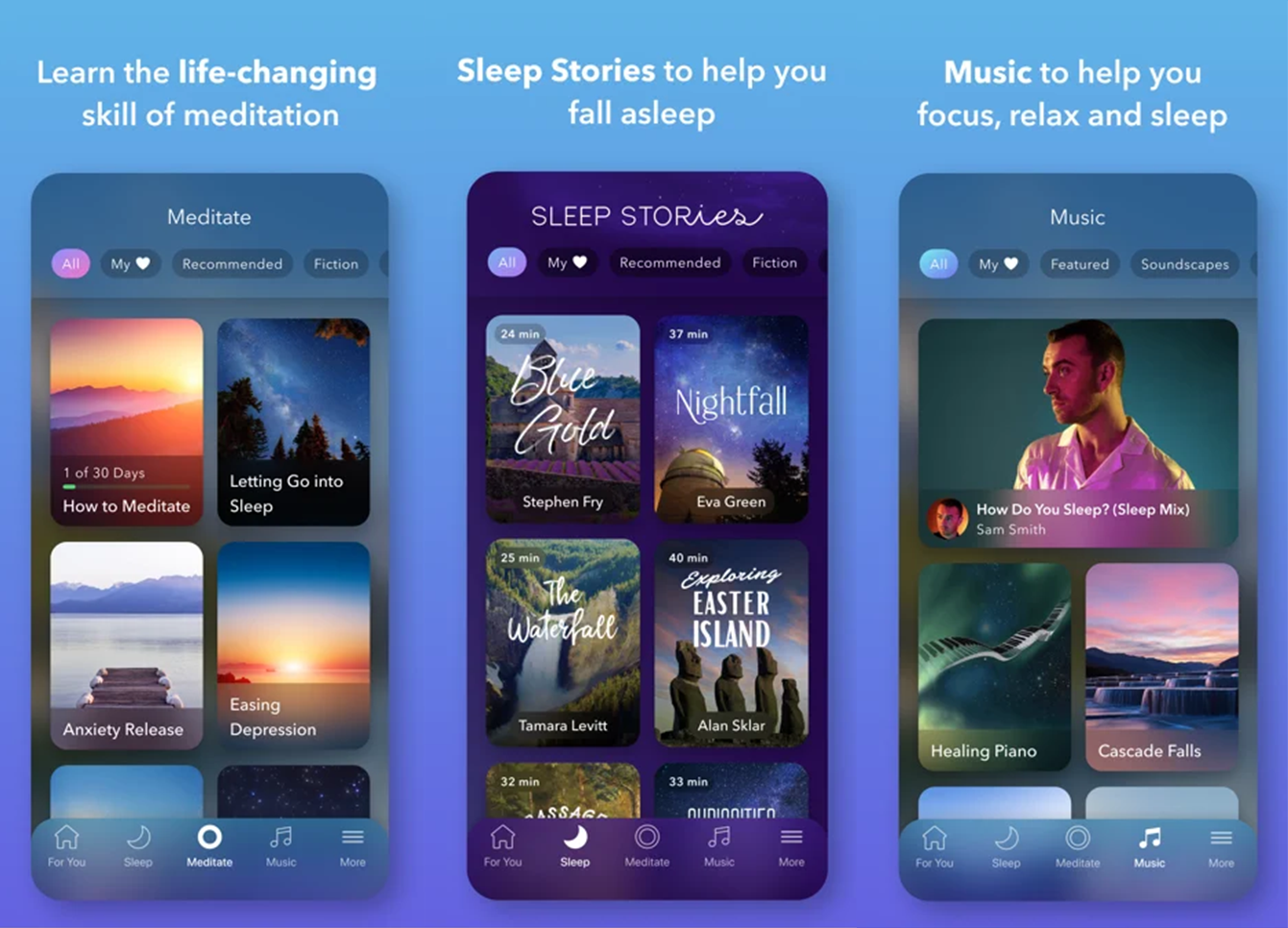
Calm is among the leading apps for relaxation, meditation, improving sleep, and reducing anxiety. It offers a variety of content, from meditations, masterclasses, sleep stories, and breathing techniques to relaxing music to improve sleep. Recommended by top mental health specialists, psychologists, and therapists, Calm provides programs for beginner, intermediate, and advanced users. It also includes a Calm Kids section for children aged 3–17 who want to practice meditations.
If you decide to develop this type of app, you may consider including the following key features in your mobile app.
FEATURE SET FOR A MENTAL HEALTH APP LIKE CALM
| User | Admin |
|---|---|
|
|
Here’s an approximate estimate for developing a React Native mental health app like Calm.
| Activity | Hours |
|---|---|
| Business analysis | 176 |
| UI/UX design | 370 |
| Backend API development | 406 |
| Mobile app development | 280 |
| Quality assurance | 158 |
| Content creation | 60 |
| Total | 1,450 |
Be ready to invest around $72,000 in your mental health app development, with a timeline of about four months for completion.
Mental disorder apps
Target audience: People with severe mental disorders
These apps are designed for people struggling with various mental disorders like anxiety, schizophrenia, obsessive-compulsive disorder (OCD), bipolar disorder, clinical depression, and post-traumatic stress disorder (PTSD).
Medical professionals prescribe mental disorder apps as a supplement to traditional psychiatric treatment because they help patients control their mental health conditions. These apps use cognitive behavioral therapy (CBT) and mood monitoring to help patients feel better. While some mental disorder apps enable users to communicate with their therapists via messages or video and audio calls, others provide patients with self-guided programs for mood tracking.
Many apps of this kind allow users to keep a diary (logging symptoms of anxiety or bipolar disorder on a daily basis) and share their experiences with a community of people who share their diagnosis.
One of the most popular mental health apps: eMoods
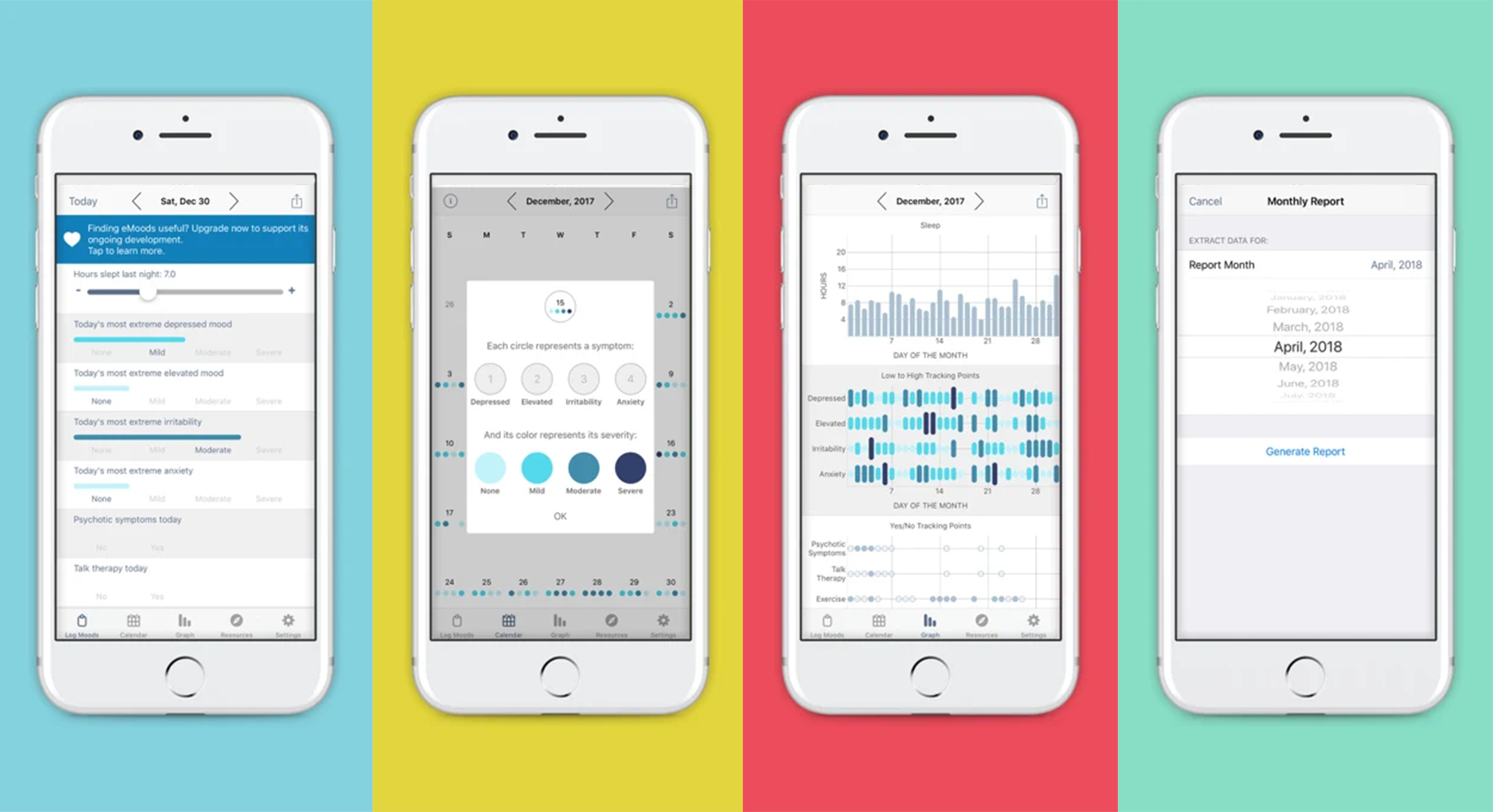
eMoods is a mental health app targeted at people who have bipolar disorder, anxiety disorders, depression, and post-traumatic stress disorder (PTSD). A simple and easy-to-use interface and features created with the nature of mental health conditions in mind make eMoods an indispensable helper to patients.
During the day, users can rate their feelings and emotions, indicating whether they feel elevated or depressed, make notes about psychotic symptoms if they appear, and view mood changes in a calendar. Additionally, they can add a list of medications, get medication reminders, track what meds work best, and make necessary adjustments in the treatment plan.
The app also allows patients to generate printable reports to email to their caregiver or therapist, who can use them to identify what triggers can lead to a relapse. One more helpful feature is the possibility to interact with other users of the eMoods app on a special forum.
FEATURE SET FOR A MENTAL HEALTH APP LIKE EMOODS
| Patient | Therapist | Admin |
|---|---|---|
|
|
|
Now let’s look at the time and money needed to develop a mood tracking app like eMoods.
| Activity | Hours |
|---|---|
| Business analysis | 259 |
| UI/UX design | 536 |
| Backend API development | 560 |
| Mobile app development | 435 |
| Quality assurance | 218 |
| Total | 2,008 |
If you decide to develop a mental health app like eMoods with the above-mentioned features, our specialists will be happy to create it for you within six months. The cost will be around $100,000.
Need a reliable mental health app development company?
Since mental health app development is a complex project that requires much knowledge and skills, help from a trustworthy software development company is highly recommended.
If you want to cooperate with a reliable partner who knows how to develop a mental health app that will become popular and bring a high return on investment, RubyGarage is an excellent choice. We have expertise in healthcare app development, a portfolio of successful projects in the field, and a professional team who will be thrilled to help bring your startup idea to life.
FAQ
-
Mental health apps help people improve their well-being. Such apps are not usually used as a substitute for treatment provided by a mental health specialist. Rather, mental health apps offer people support between consultations or after completing therapy. They can provide therapeutic activities, self-help tools, encouragement, and more.
-
Step 1. Conduct market, competitor, and target audience research to understand if your startup idea is worth implementing, find the right market niche, and formulate your unique value proposition.
Step 2. Develop a business model for your mental health app. It will help you visualize your startup idea by specifying your value proposition, the resources needed for mental health app development, and the monetization model you’ll use to earn money from your app.
Step 3. Create a scheme of your users’ interactions with the mental health app to understand their experience within the app, detect possible inconsistencies in their journey, and improve the user experience.
Step 4. Decide what features you will add to your app. Note that the exact set of features will depend on the type of mental health app you’re going to build and your value proposition.
Step 5. Validate your hypotheses to find out if your assumptions are correct.
Step 6. Design and develop a prototype to check if the app is easy to navigate and users understand how to use it.
Step 7. Develop your MVP for iOS, Android, or both operating systems. If you want to save money, you may develop a React Native app that works on both operating systems.
Step 8. Launch your mental health app and work on its continuous improvement. You’ll need to ensure proper app maintenance, provide users with high-quality support, and improve your app to outperform competitors.
-
The mental health apps market is diverse. The most popular types of mental health apps are the following:
- Online therapy apps to treat anxiety, stress, or depression
- Self-improvement, meditation, and mindfulness apps
- Mental disorder apps






